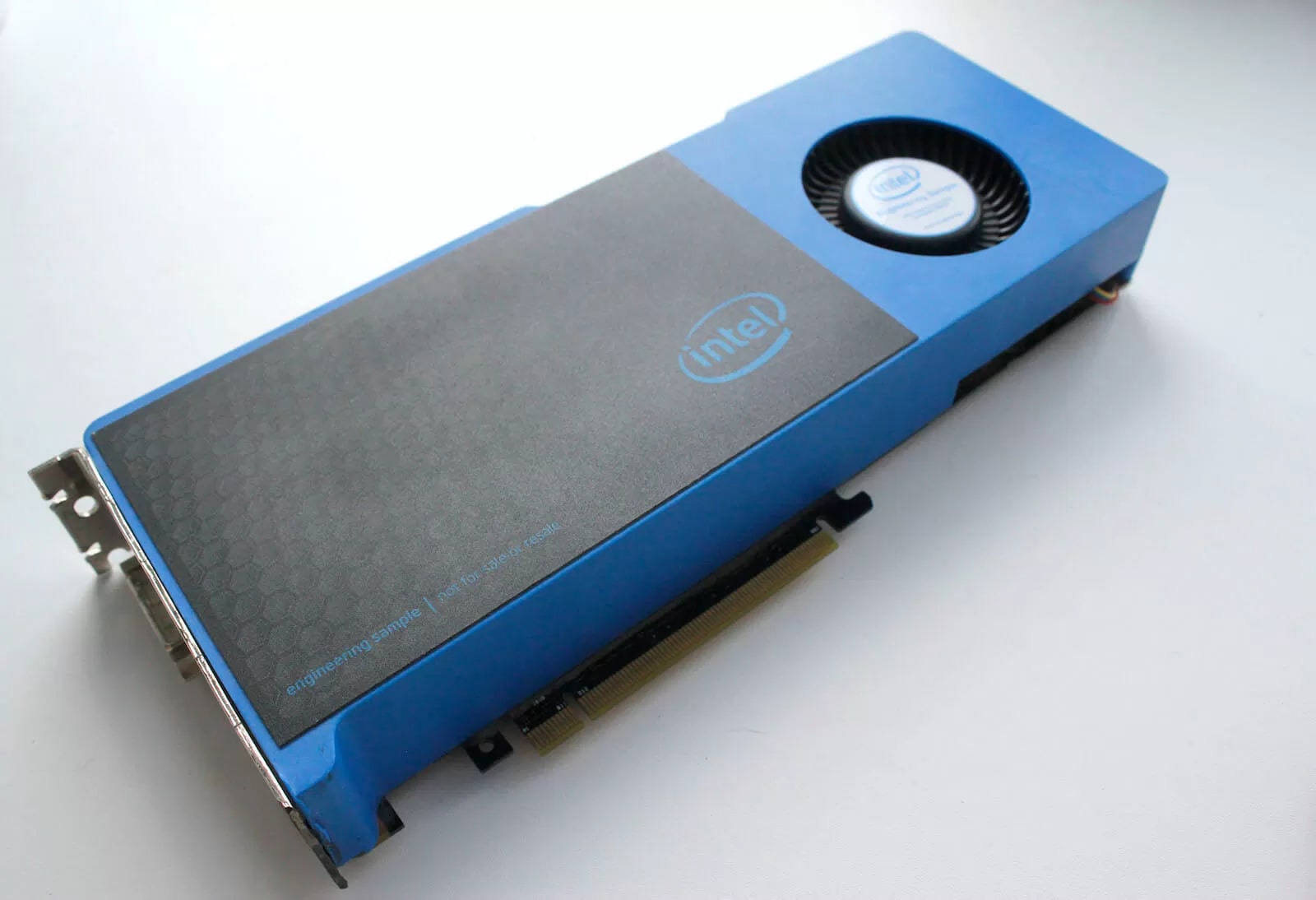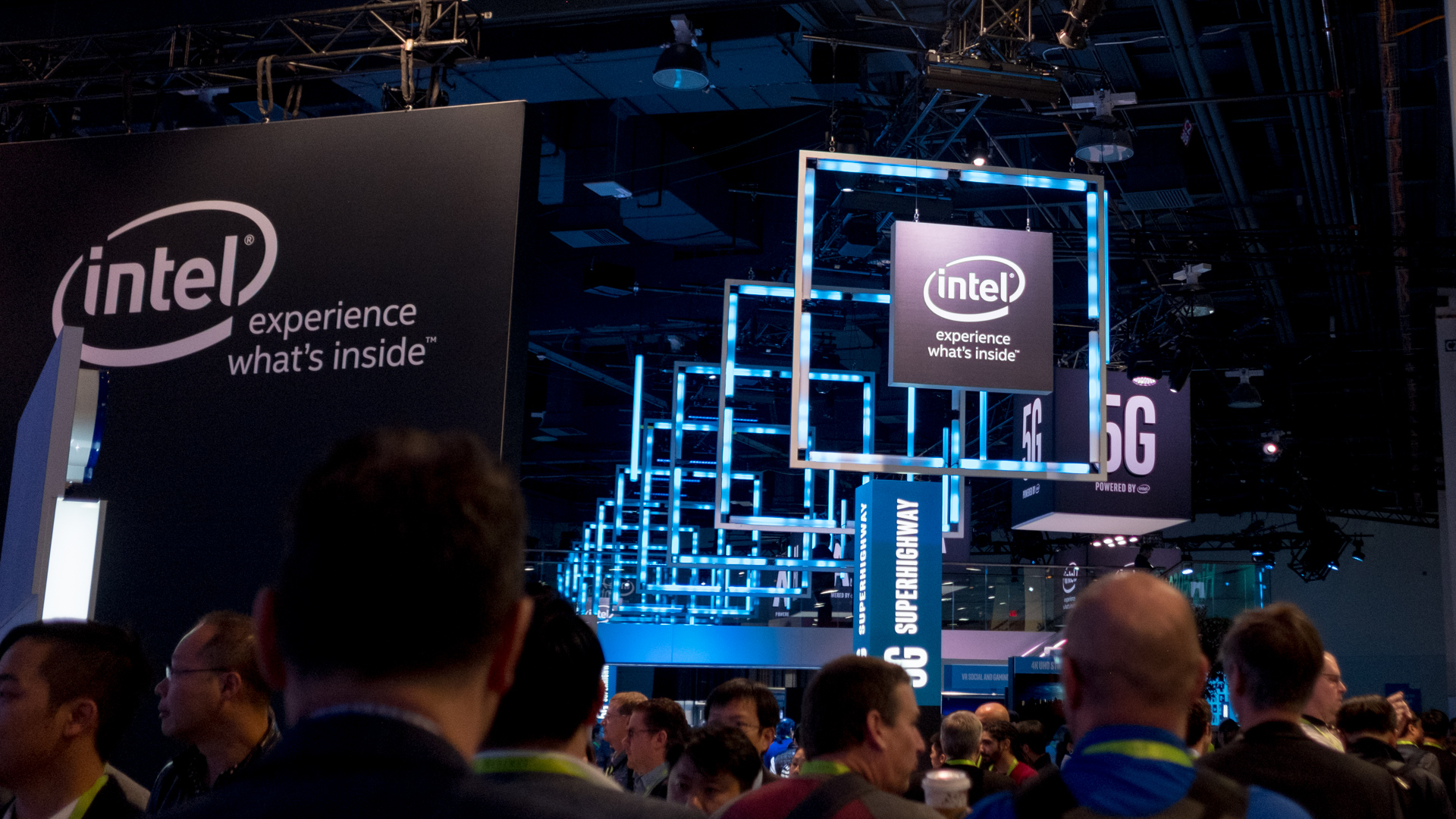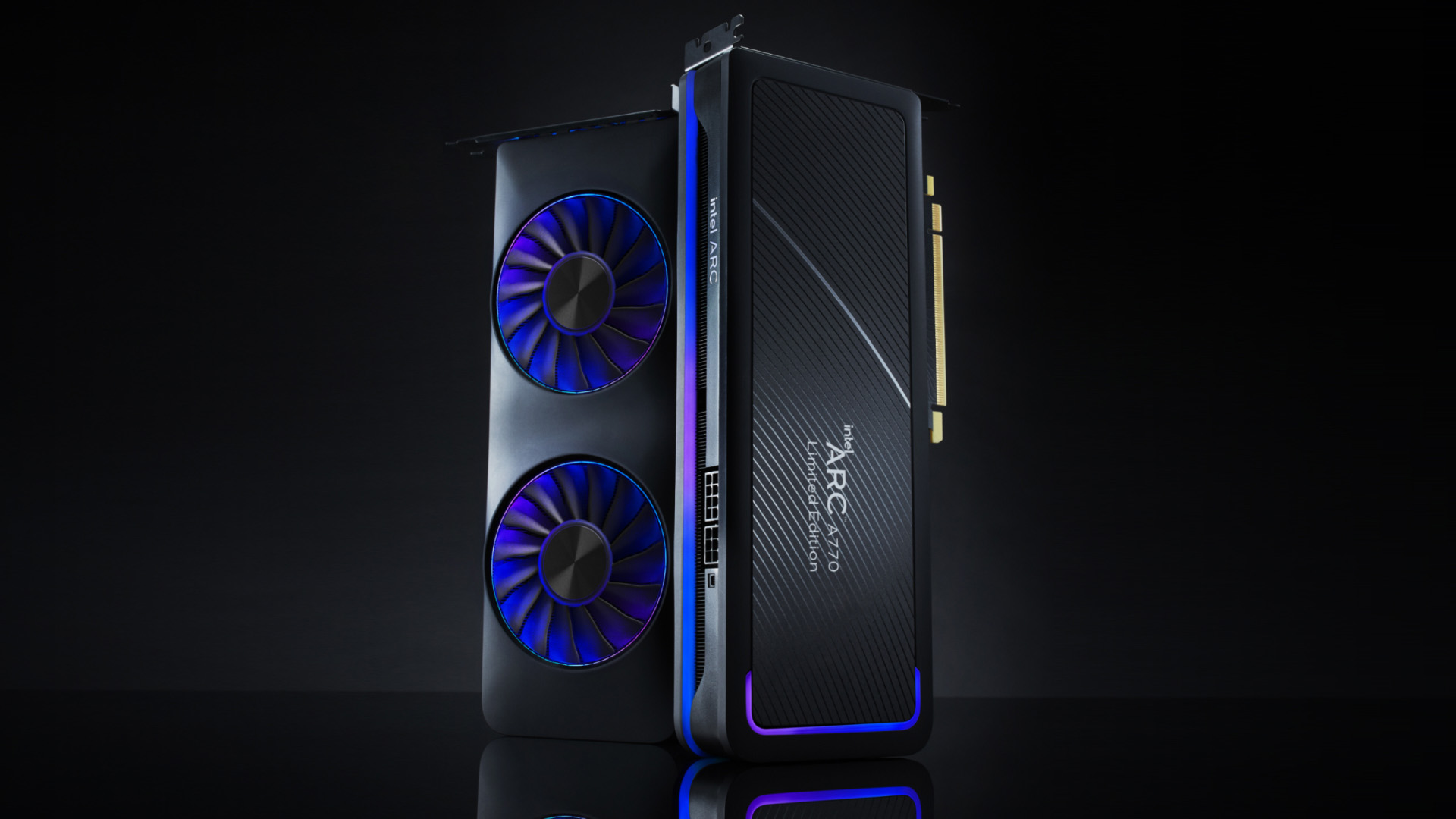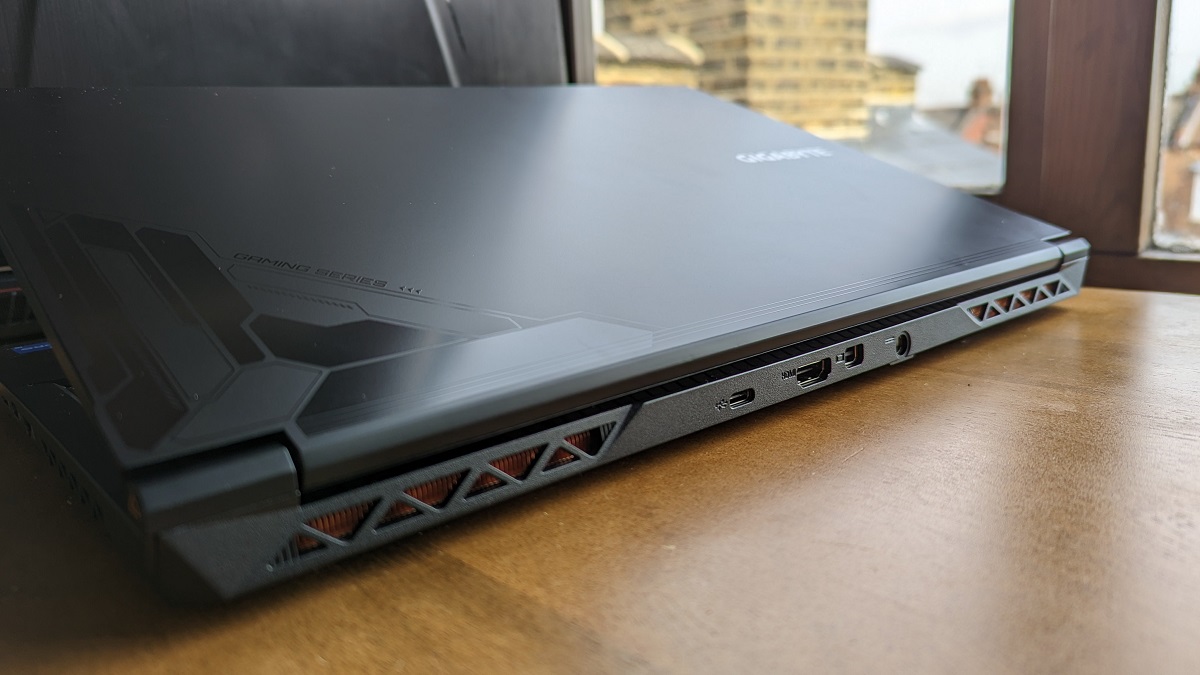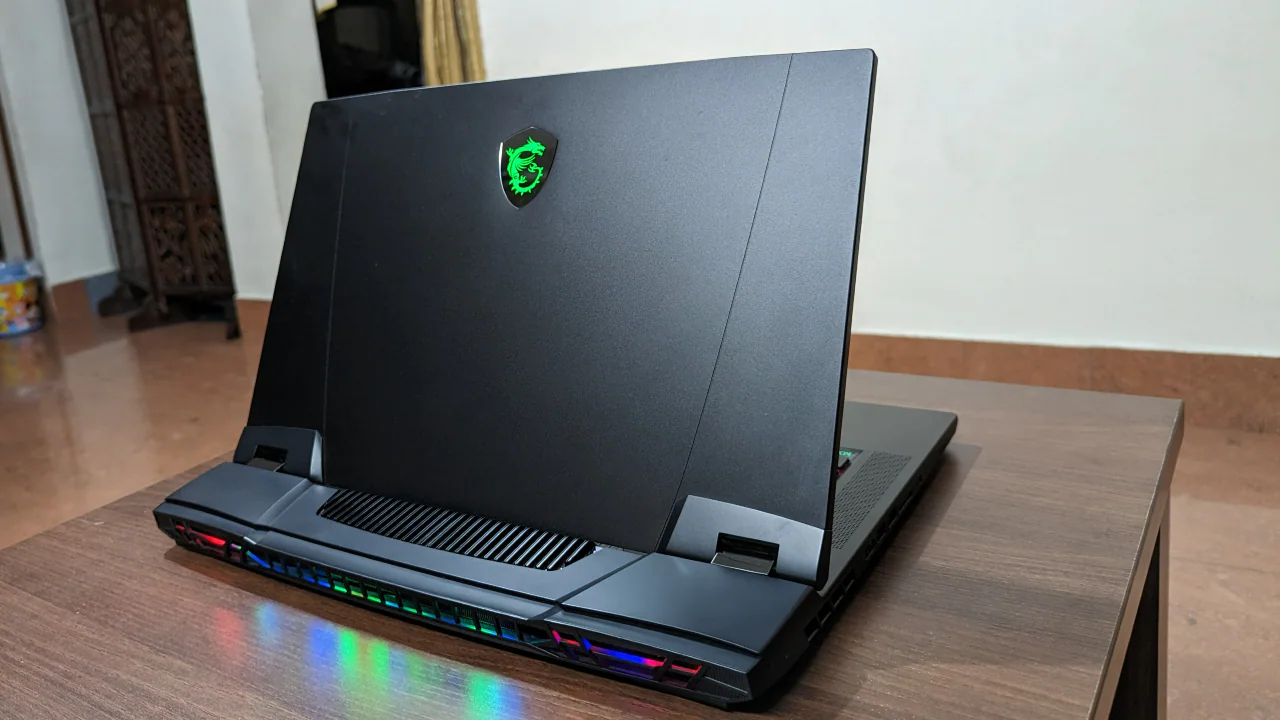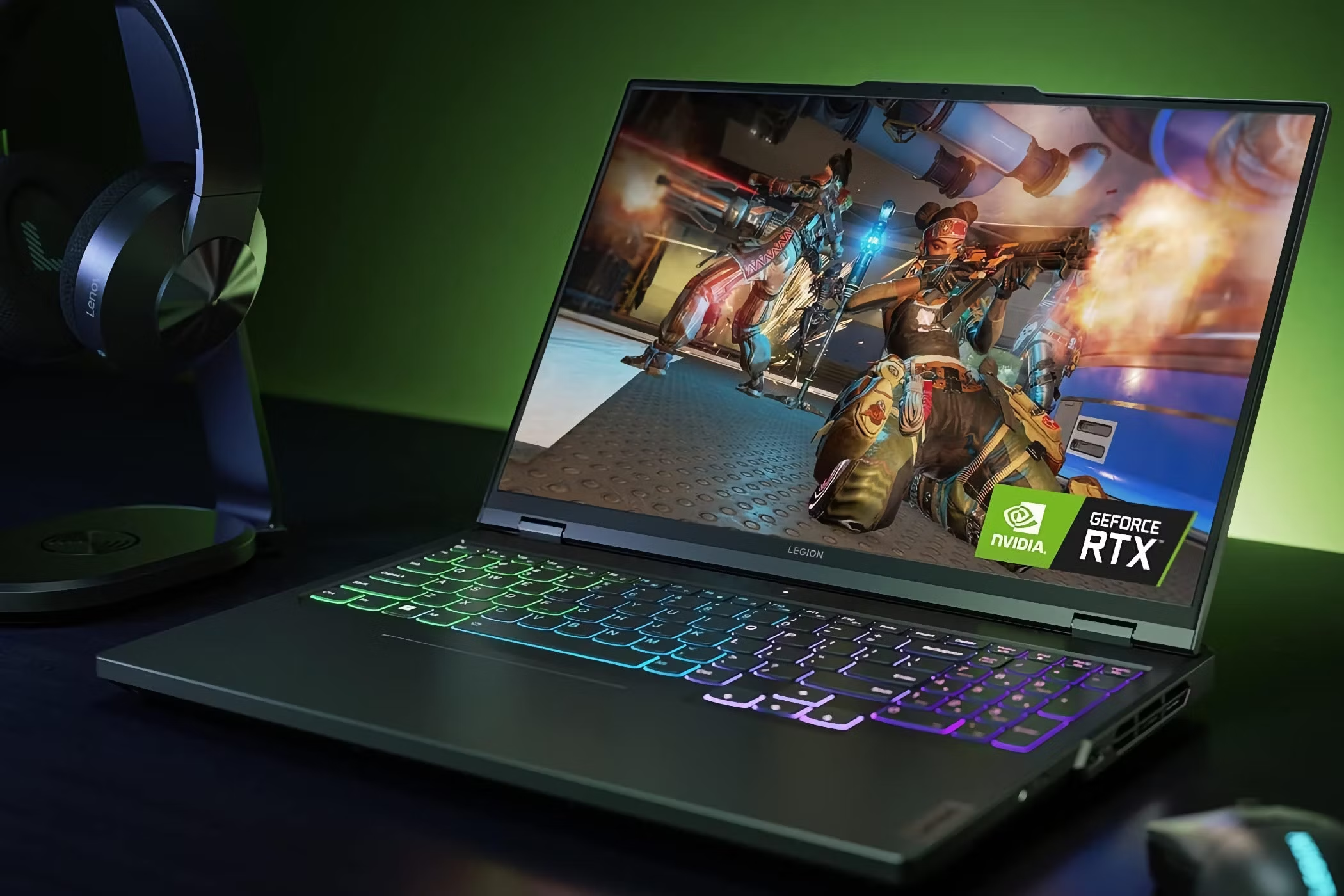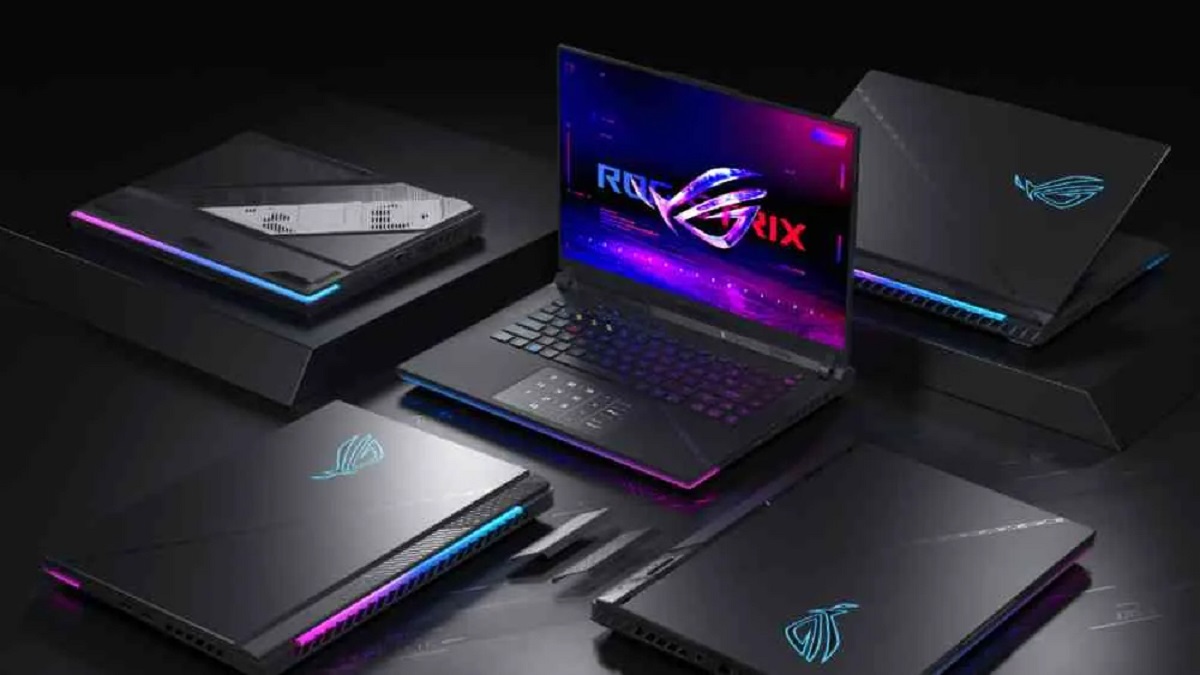Introduction
Welcome to the exciting world of graphics cards! Whether you’re a casual computer user, a passionate gamer, or a professional designer, understanding graphics cards is essential for unlocking the full potential of your system. In this article, we’ll be exploring the fascinating realm of Intel HD Graphics cards and their role in powering visual experiences.
A graphics card, also known as a video card or GPU (Graphics Processing Unit), is a crucial component of modern computers. It’s responsible for rendering images, videos, and animations on your display. While some computers come with dedicated graphics cards, others rely on integrated graphics, such as Intel HD Graphics, which are built into the computer’s processor.
Intel HD Graphics is a series of integrated graphics processors developed by Intel. Unlike dedicated graphics cards, which have their own memory and processing power, Intel HD Graphics is a cost-effective solution that shares system memory and utilizes the CPU’s processing power for graphics-intensive tasks.
Over the years, Intel HD Graphics has come a long way in terms of performance and capabilities. Intel continually updates its integrated graphics technology, providing users with improved visuals and enhanced features. Let’s dive deeper into the evolution of Intel HD Graphics and explore its performance and uses.
What is a graphics card?
A graphics card, also known as a video card or GPU (Graphics Processing Unit), is a piece of hardware that processes and generates images, videos, and animations to be displayed on a computer monitor. It is a vital component of modern computers, especially for tasks that require high-quality graphics and visual effects.
The primary role of a graphics card is to handle the complex calculations involved in rendering and displaying visuals. It accelerates the rendering process by offloading the work from the computer’s main processor, also known as the CPU. This allows the CPU to focus on other tasks, improving overall system performance.
Graphics cards consist of multiple components, including a GPU, video memory (VRAM), cooling system, and various connectors. The GPU is the core of the graphics card and is responsible for executing the mathematical calculations required for rendering images. The VRAM, on the other hand, is dedicated memory that stores image data and textures, enabling quick access for the GPU.
There are two types of graphics cards: dedicated and integrated. Dedicated graphics cards, also known as discrete graphics cards, are separate components that have their own dedicated memory and processing power. They are designed for high-performance tasks, such as gaming, video editing, and 3D rendering. Dedicated graphics cards offer superior graphics performance compared to integrated graphics.
Integrated graphics, on the other hand, are built into the computer’s motherboard or processor. Intel HD Graphics is an example of integrated graphics. Integrated graphics share system memory and rely on the computer’s CPU for processing power. They are more affordable and power-efficient but offer lower performance compared to dedicated graphics cards.
Graphics cards play a critical role in gaming, as they determine the visuals and performance capabilities of a game. Higher-end graphics cards can handle complex graphics and deliver smoother gameplay, while lower-end graphics cards may struggle with demanding games.
In addition to gaming, graphics cards are important for professionals who work with visual-intensive applications, such as graphic designers, video editors, and 3D animators. These professionals rely on powerful graphics cards to handle complex visual tasks, ensuring smooth workflow and high-quality output.
Overall, graphics cards are essential components that enhance the visual experience on computers. Whether you’re a gamer, a digital artist, or someone who simply enjoys watching movies and videos, having a capable graphics card can significantly improve your computing experience.
What is an integrated graphics card?
An integrated graphics card, also known as onboard graphics or integrated GPU (Graphics Processing Unit), refers to a type of graphics solution that is integrated into the computer’s motherboard or processor. Unlike dedicated graphics cards, which are separate components with their own dedicated memory and processing power, integrated graphics cards are a cost-effective solution that shares system resources and utilizes the CPU’s processing power for graphics-related tasks.
The main advantage of integrated graphics cards is their affordability and power efficiency. Since they are built into the motherboard or processor, there is no need to purchase a separate graphics card, which can be expensive. This makes integrated graphics a popular choice for budget-friendly computers and laptops.
Integrated graphics cards use a portion of the computer’s RAM (Random Access Memory) for storing and processing graphics data. This means they rely on the CPU to handle the calculations required to render images, videos, and animations. While this approach may result in lower overall performance compared to dedicated graphics cards, it is sufficient for everyday tasks such as web browsing, document editing, and multimedia playback.
Integrated graphics technology has significantly improved over the years, allowing for smoother graphics performance and better visual quality. Modern integrated graphics solutions, such as Intel HD Graphics, are capable of handling HD video playback and some light gaming. They also support features like hardware acceleration for video encoding and decoding, which enhances multimedia experiences.
One of the main considerations when using integrated graphics is their limitations when it comes to demanding tasks. While they can handle basic computing needs, such as office work and internet browsing, they may struggle with graphics-intensive applications and games that require more processing power and dedicated graphics memory.
It’s important to note that some computers offer a hybrid graphics solution, combining both integrated and dedicated graphics. This feature allows the system to switch between integrated graphics for everyday tasks and dedicated graphics for more demanding applications or games. This provides a balance between power efficiency and higher performance when needed.
Overall, integrated graphics cards are a viable option for users who don’t require intense graphics performance or have budget constraints. They are suitable for everyday computing tasks and light multimedia use. However, for users who require more advanced graphics capabilities, such as gamers and professionals working with graphics-intensive applications, dedicated graphics cards are recommended.
What is Intel HD Graphics?
Intel HD Graphics is a series of integrated graphics processors developed by Intel Corporation. It is a component of Intel’s processors and is designed to deliver graphics capabilities for a wide range of computing needs. Intel HD Graphics is found in various Intel processors, including those for desktop computers, laptops, and even some mobile devices.
The purpose of Intel HD Graphics is to provide a cost-effective solution for graphics processing. By integrating the graphics processing unit directly into the processor, Intel eliminates the need for a separate graphics card, reducing costs and power consumption. This makes Intel HD Graphics a common choice for mainstream computers where high-end graphics performance is not a priority.
Intel continuously improves its integrated graphics technology by releasing new generations of Intel HD Graphics. Each new generation brings enhancements in terms of performance, power efficiency, and feature set. This allows users to enjoy better graphics performance, improved visual quality, and support for newer technologies with each iteration.
Intel HD Graphics offers various features that enhance the visual experience of users. One notable feature is support for high-definition video playback, allowing users to enjoy crisp and smooth video content. Intel HD Graphics also supports hardware acceleration for video encoding and decoding, which improves performance and efficiency when working with multimedia tasks.
Another key benefit of Intel HD Graphics is its compatibility with multiple display technologies. It supports various display interfaces, such as HDMI, DisplayPort, and VGA, allowing users to connect their computers to different types of monitors and displays. With multiple display support, users can extend their desktop or enjoy a dual-monitor setup for increased productivity.
While Intel HD Graphics is not intended for high-end gaming, it is still capable of running many modern games at lower settings. Intel has made significant improvements to the gaming capabilities of Intel HD Graphics over the years, enabling casual gamers to enjoy a smooth gaming experience with less demanding titles.
Overall, Intel HD Graphics provides an affordable and energy-efficient graphics solution for everyday computing needs. It offers a good balance between cost, performance, and power consumption, making it suitable for tasks such as web browsing, office work, multimedia playback, and casual gaming. However, for users who require more advanced graphics performance, such as gamers or professionals working with graphics-intensive applications, a dedicated graphics card is recommended.
Evolution of Intel HD Graphics
The evolution of Intel HD Graphics has been a remarkable journey, with each generation bringing significant improvements in performance, visual quality, and feature set. Let’s take a closer look at the key milestones and advancements that have shaped the development of Intel HD Graphics over the years.
The first iteration of Intel HD Graphics was introduced in 2010 with the arrival of Intel’s “Arrandale” processors. These integrated graphics processors were capable of handling basic graphics tasks and supported DirectX 10.1, bringing improved visual quality to mainstream computers. However, their performance was limited, making them suitable for basic computing needs and low-demand games.
With the launch of Intel’s “Sandy Bridge” processors in 2011, the second generation of Intel HD Graphics debuted. This generation brought significant improvements in performance and features, supporting DirectX 10.1 and 11, as well as hardware decoding and encoding of high-definition video content. The “Sandy Bridge” processors marked a turning point for Intel HD Graphics, as they offered a noticeable boost in graphics performance, enabling smoother multimedia experiences and even moderate gaming capabilities.
Building on the success of the second generation, the “Ivy Bridge” processors were released in 2012, introducing the third generation of Intel HD Graphics. This generation further improved graphics performance and introduced support for DirectX 11.1, allowing for enhanced visual effects and more realistic graphics rendering. The “Ivy Bridge” processors also introduced new features, such as Intel Quick Sync Video, which accelerated video editing and encoding tasks.
In 2013, Intel launched the “Haswell” processors, introducing the fourth generation of Intel HD Graphics. This iteration brought even more performance improvements and introduced support for OpenGL 4.0, further enhancing the visual capabilities of Intel HD Graphics. The “Haswell” processors also introduced the Intel Iris Graphics, a higher-end variant of Intel HD Graphics, which offered improved gaming performance and support for 4K video playback.
In subsequent years, Intel continued to refine and enhance their integrated graphics technology. The fifth generation, known as “Broadwell,” brought power efficiency improvements and added support for DirectX 12, delivering better gaming experiences and more efficient graphics processing.
The sixth generation, known as “Skylake,” arrived in 2015, and it marked another significant step forward for Intel HD Graphics. It introduced support for DirectX 12.1 and brought further improvements in graphics performance. The “Skylake” processors also offered support for multiple 4K displays, catering to the growing demand for high-resolution and multi-monitor setups.
In 2017, the seventh generation, known as “Kaby Lake,” was released, and it saw Intel focusing on enhancing media playback and improving video streaming capabilities. With support for 4K Ultra HD content and the ability to decode HEVC (High-Efficiency Video Coding) videos, Intel HD Graphics delivered smoother playback of high-resolution videos.
Most recently, Intel released the eighth generation, known as “Coffee Lake,” and the ninth generation, known as “Ice Lake,” both offering increased performance and more advanced graphics capabilities. These generations introduced support for higher refresh rates, improved gaming performance, and additional features like Intel Quick Sync Video and Intel UHD Graphics.
The continuous evolution of Intel HD Graphics has transformed integrated graphics from basic visual processors to capable solutions that can handle a wide range of tasks. While they may not compete with dedicated graphics cards, Intel HD Graphics has become a reliable and accessible option for mainstream users, offering improvements in performance and visual quality with each new generation.
Performance of Intel HD Graphics
The performance of Intel HD Graphics has steadily improved over the years, providing users with better graphics capabilities for their computing needs. While integrated graphics may not match the power of dedicated graphics cards, Intel has made significant strides in enhancing the performance and efficiency of Intel HD Graphics with each new generation.
The performance of Intel HD Graphics is influenced by several factors, including the specific generation of the processor, the clock speed, the number of execution units, and the amount of shared memory. Generally, newer generations of Intel HD Graphics offer improved performance and support for newer technologies and graphics APIs, such as DirectX and OpenGL.
For basic computing tasks, such as web browsing, document editing, and multimedia playback, Intel HD Graphics provides sufficient performance. It is capable of handling everyday tasks with ease, offering smooth navigation through websites, quick document rendering, and high-quality video playback.
When it comes to gaming, Intel HD Graphics provides a capable solution for casual gamers. With each new generation, Intel has focused on increasing the gaming capabilities of their integrated graphics processors. While Intel HD Graphics may not handle the latest AAA titles at high settings, it can still run many popular games at lower settings, allowing users to enjoy a satisfactory gaming experience.
In addition to gaming, Intel HD Graphics also lends itself well to other graphics-intensive applications. It can handle tasks such as photo editing, graphic design, and video editing. While these tasks may require more processing power, Intel HD Graphics can still deliver satisfactory performance for users who work with smaller projects or are not engaged in professional-grade work.
When comparing the performance of Intel HD Graphics to dedicated graphics cards, it is important to note the trade-offs. Dedicated graphics cards excel in tasks that require intense graphical processing, such as gaming, 3D rendering, and complex visual effects. They have their own dedicated memory and processing power, which enables them to handle demanding graphics tasks more efficiently.
However, the power efficiency and cost-effectiveness of Intel HD Graphics make it an attractive option for many users. It allows for a compact and energy-efficient system design while still providing satisfactory graphics performance for everyday tasks. Additionally, Intel HD Graphics benefits from regular driver updates, which further improve performance and compatibility with various software and applications.
In summary, the performance of Intel HD Graphics has come a long way, offering an accessible and reliable solution for users who don’t require high-end graphics performance. With each new generation, Intel has made strides in improving the graphics capabilities of their integrated graphics processors, providing smoother visuals, better gaming performance, and support for newer technologies. While it may not match the power of dedicated graphics cards, Intel HD Graphics is more than capable of handling everyday computing tasks, casual gaming, and graphics-intensive applications.
Uses of Intel HD Graphics
Intel HD Graphics serves a variety of purposes, catering to different user needs and providing reliable graphics capabilities for a range of tasks. Let’s explore some of the common uses of Intel HD Graphics and how it enhances the computing experience.
1. Everyday Computing: One of the primary uses of Intel HD Graphics is for everyday computing tasks. Whether it’s web browsing, email management, document editing, or multimedia playback, Intel HD Graphics delivers smooth and efficient graphics performance. It ensures a visually pleasing experience while navigating websites, viewing photos, and watching videos.
2. Casual Gaming: Intel HD Graphics is capable of running many popular games, making it suitable for casual gamers. While it may not handle demanding AAA titles at high settings, it provides adequate performance for less demanding games and older titles. Users can enjoy casual gaming experiences without the need for a dedicated graphics card.
3. Multimedia Playback: Intel HD Graphics offers hardware acceleration for video encoding and decoding, enhancing multimedia playback capabilities. It supports high-definition video playback, allowing users to enjoy movies, TV shows, and online streaming content in crisp and smooth quality. With Intel HD Graphics, users can access and enjoy various multimedia platforms without performance issues.
4. Photo Editing and Graphic Design: Intel HD Graphics provides ample capabilities for tasks like photo editing and graphic design. While professionals in these fields may opt for dedicated graphics cards for more demanding work, Intel HD Graphics is suitable for users dealing with smaller projects or conducting non-professional graphic design tasks. It ensures smooth navigation through editing tools and delivers satisfactory rendering and visual quality.
5. Multimedia Creation: For users involved in multimedia creation, such as video editing or 2D animation, Intel HD Graphics can handle basic editing tasks, including timeline playback, transitions, and effects. While it may not offer the same level of performance as dedicated graphics cards, it provides enough power to support entry-level multimedia production and rendering.
6. Multiple Display Setups: Intel HD Graphics supports multiple monitors, allowing users to set up extended desktops or dual monitor configurations. This feature is beneficial for professionals who require additional screen space for multitasking, such as programmers, content creators, and data analysts. It increases productivity and workflow efficiency by providing simultaneous visibility of multiple windows and applications.
7. Power-Efficient Systems: The energy efficiency of Intel HD Graphics makes it an ideal choice for laptops, ultrabooks, and other portable devices. It allows for longer battery life and reduces heat generation, enabling devices to operate in a more power-efficient and comfortable manner. Intel HD Graphics strikes a balance between performance and power consumption, making it suitable for users on the move.
In summary, the uses of Intel HD Graphics span a wide range of applications, from everyday computing to casual gaming, multimedia playback, and entry-level creative tasks. While it may not match the performance of dedicated graphics cards, Intel HD Graphics provides reliable graphics capabilities for various user needs, enhancing the visual experience in a cost-effective and power-efficient manner.
Conclusion
Intel HD Graphics has revolutionized the world of integrated graphics by providing users with reliable and cost-effective graphics capabilities. Over the years, Intel has consistently improved the performance, visual quality, and feature set of their integrated graphics processors, making them suitable for a wide range of applications.
From everyday computing tasks to casual gaming, multimedia playback, and entry-level creative work, Intel HD Graphics delivers satisfactory performance for various user needs. It ensures smooth web browsing, quick document rendering, and high-quality video playback. It can handle popular games at lower settings, allowing casual gamers to enjoy a smooth gaming experience. It supports multimedia creation tasks like photo editing and basic graphic design.
One of the notable benefits of Intel HD Graphics is its power efficiency, making it suitable for laptops, ultrabooks, and other portable devices. It allows for longer battery life and reduces heat generation, providing a comfortable user experience on-the-go.
While Intel HD Graphics may not match the performance of dedicated graphics cards in demanding tasks, it provides an accessible and cost-effective solution for mainstream users. It eliminates the need for an additional graphics card, reducing costs and simplifying system design.
In summary, Intel HD Graphics has evolved from basic integrated graphics to a reliable and capable solution. It enhances the visual experience of users, whether they are navigating websites, playing games, editing photos, or engaging in multimedia creation. Intel continues to innovate and improve their integrated graphics technology, ensuring that Intel HD Graphics remains a viable option for users who don’t require high-end graphics performance but still want to enjoy a smooth and visually pleasing computing experience.







